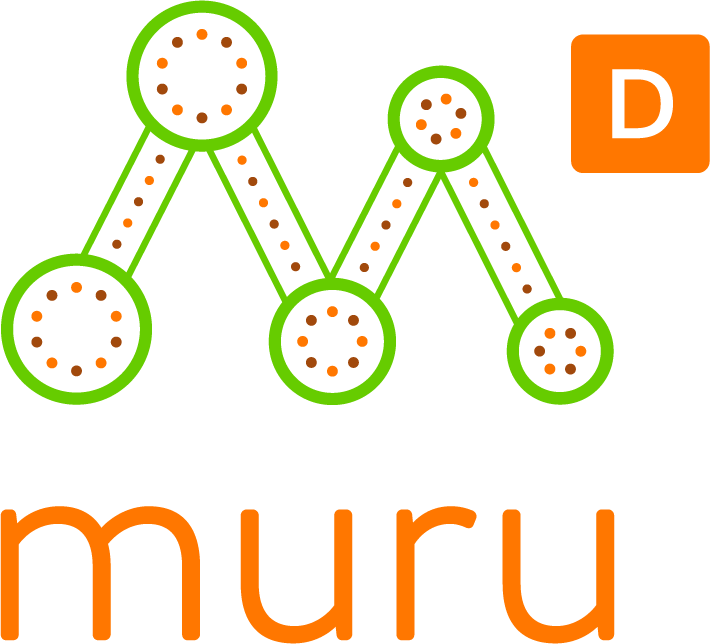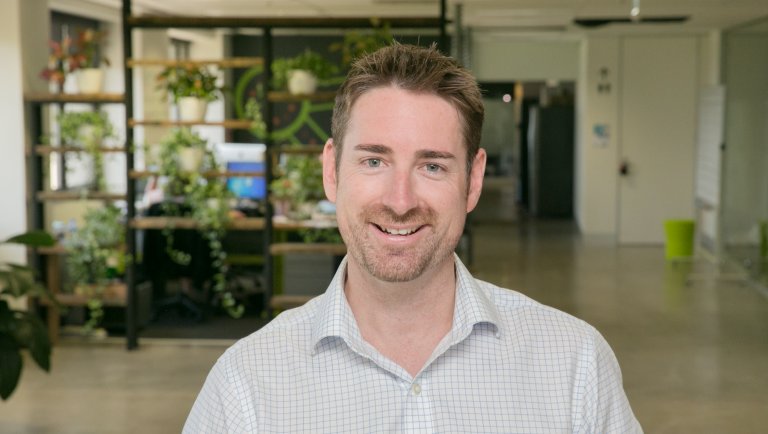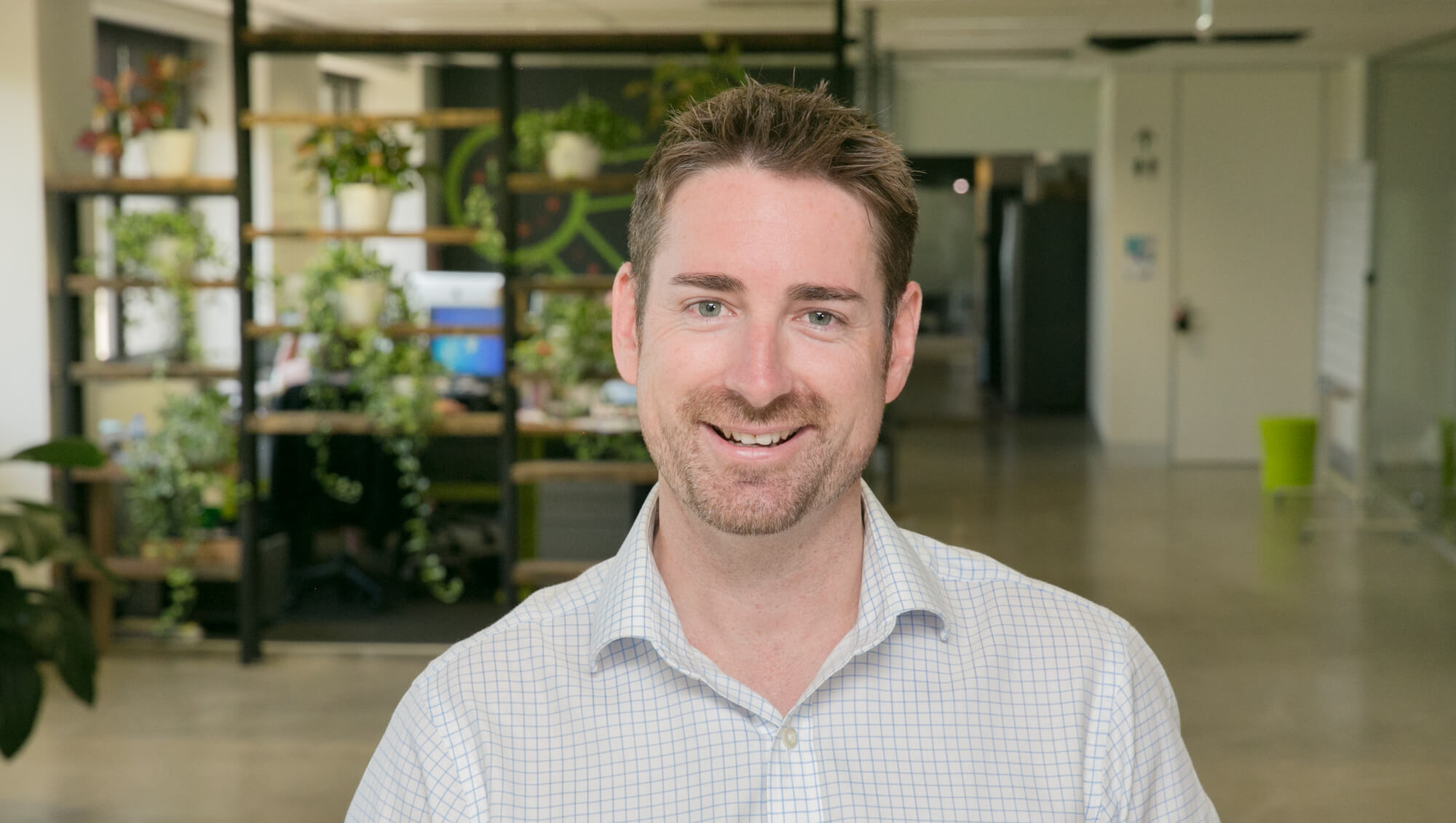Skygrow’s blue-sky vision: using tree-planting robots to fight climate change
This article originally appeared on Telstra Exchange and is republished with permission.
Planting a tree is a considerable task, even for someone who knows what they’re doing. Multiply that task a hundredfold and it’s even more daunting – except if you’re using a team of highly specialised tree-planting robots to lay the groundwork for you. SkyGrow, one of our muru-D #SYD5 startups, has a high-tech solution that will be part of the future of fighting climate change and sustaining biodiversity and ecosystems.
SkyGrow founder and CEO Mark Stewart believes that this, more than anything else he’s done before, has the potential to address climate change and environmental issues on a massive scale. Mark has a background in environmental regulation, and has a longstanding passion for trees and addressing the growing problem of deforestation in countries around the world.
It’s a grand vision: creating a sustainable world for future generations. But to get there, SkyGrow’s mission is deceptively simple. It’s a mission of scale: planting trees faster than the rate at which they’re being cleared by development and deforestation. For that, SkyGrow and Mark Stewart are turning to technology. Stewart isn’t shy about the potential:
“Everything we’re doing is breaking new ground – quite literally, in some cases.”
With the economic cost of land degradation to communities and governments pegged at $US231 billion per year and rising[1], it’s clear that we need to do more to address the growing lack of established trees and vegetation – and that’s before you consider the overall impact of climate change. Tree planting is the obvious solution, but it’s not so simple. And it’s a worldwide problem, one that Stewart says you can see if you go for a drive, not just one restricted to faraway places like the Amazon.
It is true that the face of massive forests like the Amazon have changed in recent decades; in fact, Russia now has the world’s largest forest area[2]. Deforestation due to industrial logging continues and the solution is simply planting more trees. The problem with current tree planting methods is that they’re highly manual, requiring lots of physically fit planters who have to be trained and traditional planting methods are just far too slow to counter the rate of deforestation. Other robotic techniques use flying drones to disperse seeds, but this method is not suitable for native plants that don’t grow well from seeds and it is also not effective where hard soils exist.
With the help of our muru-D startup accelerator, SkyGrow is getting the resources it needs to succeed. From laying out business plans to refining the way the founders make decisions, along with startup funding, the #SYD5 cohort entrant appreciates the help. “It’s been both challenging and rewarding; it’s really busy, but we’re covering a lot. There are components of the accelerator that have driven me to critique certain aspects of our business and this has helped us become stronger and more resilient.”
“We have a scientific and ‘lean’ approach in everything that we do – that way we can validate it and learn from it. That’s the business side, but our vision is to be out there – planting trees, making a more sustainable environment for humanity.”
The Growbot – a custom-built unmanned ground vehicle, somewhere between a six-wheeled miniature truck and a maneuverable small tank – can plant trees 10 times faster than even a trained individual, as well as planting trees at around half the cost of traditional tree planting techniques. It plants established trees, rather than seeds, which ensures fast growth and high success rates.
“We built a concept Growbot to see how it worked, then we travelled to China to see how companies like Tesla make their products, and got a feel for how mass-scale manufacturing works. We plan to have 4,500 of these tree-planting robots out there. Our planting system is highly scalable, so it’s only a matter of time before people see these Growbots doing the dirty, dull and dangerous tree planting activities in their neighbourhoods.”
SkyGrow has also developed its own ‘Treetubes’, a payload that the robot positions into the drilled ground and which consists of a biodegradable treeguard, a young tree or other plant and a nutrient package that ensures fast growth and high survival rates. The Growbot has a specialised drill to break up hard soil and that makes planting fast and easy. The goal of planting trees in higher numbers is achieved by planting trees more effectively.
While they are taking part in our muru-D #SYD5 incubator program, SkyGrow is also already working with early partners like local councils to test its technology on pilot sites. Councils often have targets on the number of trees that must be planted in government areas to accommodate development, and the lower costs of SkyGrow’s tree-planting robots make that more feasible – and lets councils use funding more effectively to plant more trees. “It’s a good playing field to test the technology in,” says Stewart.
The tree-planting robots aren’t going to displace trained arborists or experts in their field either. Planting trees still requires human effort and intervention and SkyGrow’s startup team is conscious of this. Its Growbots are better at some particularly difficult tree-planting tasks: for example, where soil is hard or contains clay, or in difficult terrain, or where venomous snakes and spiders are a threat. This leaves the more sophisticated and less physically demanding tasks to existing trained planters.
SkyGrow’s tree planting solution is a complete one, including a site assessment using both trained experts and cutting-edge technology – for example, using drones for aerial assessments. The business will recommend the best tree and plant species for a region and site, use the tree-planting robots to plant its tree stock, and monitor those trees in the future – a service that would be too costly to involve humans at every step of the process.
The company is currently working on its next-generation Growbot, a robot that can plant in excess of 1000 trees at a time and use autonomous systems to follow a pre-programmed planting route. “We can fly a drone over a site and map the area, then we just set up the laptop and send out the Growbots to plant trees in an area autonomously.”
From there, scaling means using more autonomous Growbots simultaneously. “The next step is to get four Growbots in an area, to set them up like a gander or swarm. That way we’ll be covering more area. We’re right on the cusp of AI, so we’re riding that trend – we’re on the cusp of reading the environment visually too.” This all translates to leaps forward in mass-planting trees, as quickly as possible.
Innovative uses for robotics – and for the people that can program and control them – are changing the world around us already. SkyGrow’s vision for the future will take some time to appear, but with the help of Telstra’s muru-D accelerator, it might just be one where the sky is a little bluer and the land a little greener.
[1] Ephraim Nkonya and Alisher Mirzabaev Joachim von Braun (2016). Economics of Land Degradation and Improvement – A Global Assessment for Sustainable Development. Open access online book at SpringerLink.com.
[2] Matthew C. Hansen, Stephen V. Stehman, and Peter V. Potapov (2010), Quantification of global gross forest cover loss, PNAS, Vol. 107, No. 19.
The Author
Campbell Simpson, Senior Digital Editor – Telstra
Campbell is the editor of Telstra Exchange, and is responsible for the site’s overall editorial strategy as well as day-to-day publishing. He has worked in Australia’s technology media for over a decade at websites like Gizmodo, CNET and PC World, and has a longtime love of tech and gadgets. When he’s not writing, Campbell spends his downtime outdoors whenever possible, hiking, camping or mountain biking around New South Wales.



